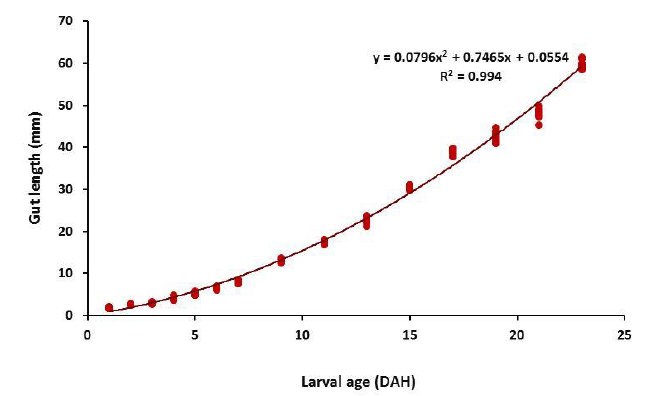Histo-morphological development of the digestive tract of larval hybrid Malaysian mahseer (Barbonymus gonionotus ♀ × Tor tambroides ♂)
DOI:
https://doi.org/10.17762/sfs.v7i2.116Keywords:
Carp, Digestive capability, Histology, Weanin g, Gut indexAbstract
New carp hybrids are being developed for the aquaculture industry to support rising seafood demands. The present study was carried out to observe the changes in digestive tract, histology and functional capabilities of the new hybrid carp larvae for a better understanding of its digestive capability and the prediction of its best weaning time to a compound diet. A tubal digestive tract was elongated to the anus and buccal cavity by 3 DAH that coincided with the mouth opening and the start of exogenous feeding. A functional stomach was observed at 7 DAH with the relative gut index (RGI) of 10.7 ± 0.06. A layer of supranuclear protein was observed with lipoprotein at the outer layer of the digestive tract at 7 DAH. The morpho-histological results of this study indicated that hybrid Malaysian mahseer larvae should be able to digest, ingest and absorb an artificial diet beginning from 7 DAH. At this stage, the hybrid larvae could be gradually or perhaps totally weaned to an artificial diet of a suitable particle size.










